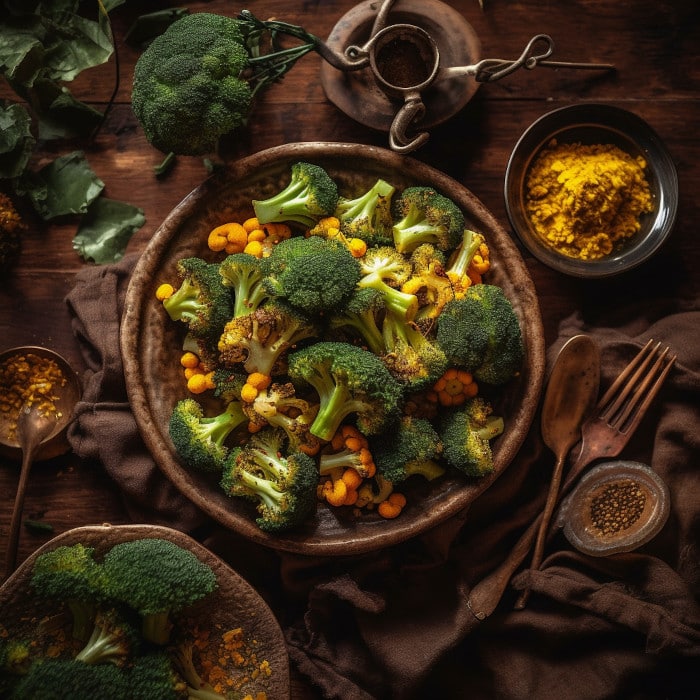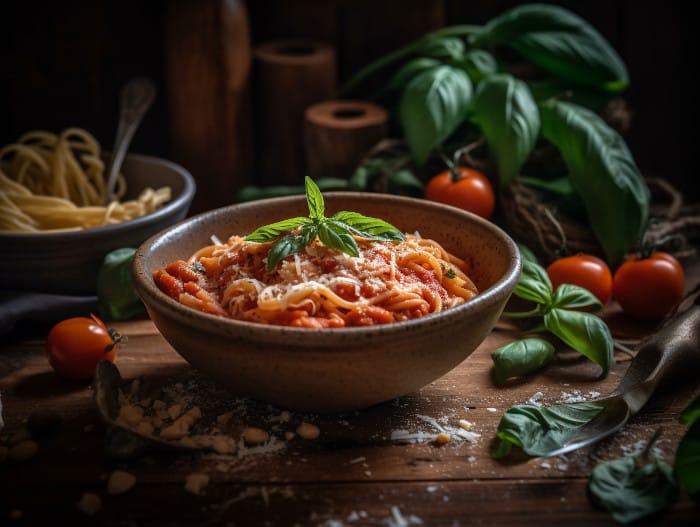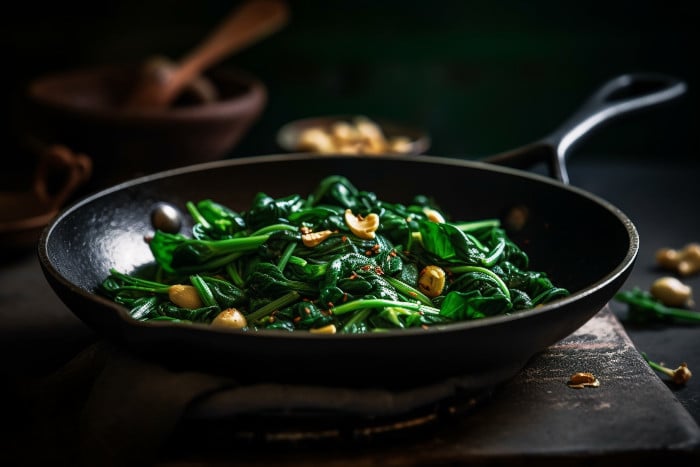Last Updated on July 7, 2024 by Max
Introduction
As the saying goes, sometimes what we seek is hiding in plain sight. This holds especially true when it comes to health and wellness. In our quest for vitality, we often look for answers in exotic remedies, invest in expensive supplements of uncertain quality, or chase after the latest superfoods from distant lands. Yet, the answer to some of our health challenges could be sitting in our kitchen cabinets or at the local grocery store.
Enter garlic. This humble allium, a staple in culinary traditions worldwide, may not carry the exotic allure of the newest superfoods. But as we’ll explore in this comprehensive guide, garlic packs a punch well above its weight regarding potential health benefits. From offering robust defenses against prostate cancer to boosting cardiovascular health and even fortifying our immune system, garlic’s health story weaves a compelling narrative. It is a poignant reminder of everyday foods’ power and healing secrets.
So, let’s peel back the layers, much like the cloves of a garlic bulb, to explore the potent health benefits this common culinary ingredient offers. After all, isn’t it time we celebrated the heroes hiding in our kitchen?
- Introduction
- The Allure of Allium: An Overview of Garlic
- Garlic and Prostate Cancer: Digging into the Research
- Breast Cancer: Food as Armor?
- Colorectal Cancer: A Dash of Prevention?
- Gastric Cancer: An Unexpected Ally?
- Garlic’s Healing Properties: Beyond Prostate Cancer
- Antimicrobial Action: Garlic, The Natural Defender
- Cardiovascular Benefits: Love, Garlic, and Lower Numbers
- Immune-Boosting Powers: Unleashing Garlic’s Inner Hero
- Incorporating Garlic into Your Diet: Practical Tips
- Precautions and Side Effects of Garlic Consumption
- Conclusion
- References
The Allure of Allium: An Overview of Garlic
Once considered a simple kitchen ingredient, garlic’s reputation has blossomed over the years into a symbol of health and wellness. This aromatic Allium family member has found its place in culinary arts and the annals of traditional medicine.
Garlic’s roots burrow deep into history. Ancient Egyptians prized it for its medicinal properties, while Hippocrates, the father of Western medicine, frequently prescribed it for various ailments. From the Indus Valley’s ancient civilizations to World War II’s war trenches, garlic has been hailed as a potent protective agent, earning it the nickname “Russian Penicillin” (Block, E., 2010).
But what is it about garlic that has won the adoration of chefs and health enthusiasts alike?
The magic lies in its nutritional profile. Each clove of garlic is a tiny treasure trove of vital nutrients. It boasts an impressive array of vitamins and minerals, including Vitamin C, Vitamin B6, and Manganese, each playing its part in bolstering our health. The antioxidant properties of garlic, thanks to compounds like flavonoids and selenium, aid in combating oxidative stress, protecting our cells from potential damage (Amagase, H. et al. 2001).
But garlic’s true prowess lies in its unique sulfur compounds. When a garlic clove is crushed or chopped, it releases an enzyme called alliinase, catalyzing the transformation of alliin, a sulfur-containing amino acid, into allicin. Allicin, an organosulfur compound, is the source of garlic’s distinctive aroma and health benefits. This incredible compound has been studied for its potential antimicrobial, anti-inflammatory, and antioxidant properties (Borlinghaus, J. et al., 2014).
This humble bulb’s offering of nutritional wealth and beneficial compounds can make it a vital part of our diets, helping us steer the course toward improved health. And as we’ll discover, its benefits can extend to playing a significant role in managing prostate health. Can you imagine what a simple diet change means for our health? Dive in as we continue to peel back the layers of this fascinating allium.
Garlic and Prostate Cancer: Digging into the Research
Numerous research studies have started to elucidate the role of garlic in prostate health. For instance, in the study published in the Journal of the National Cancer Institute, researchers conducted a population-based, case-control study in Shanghai, China. They interviewed 238 men with prostate cancer and 471 men without the disease about their dietary habits, including their intake of allium vegetables. The findings revealed that men who consumed more than 10 g of allium vegetables had a 50% lower risk of prostate cancer than those who ate less than 2.2 g daily. When looking at garlic specifically, men who consumed 2.0 to 5.0 g per day had a 32% lower risk of prostate cancer (Hsing A.W. et al., 2002). This is a groundbreaking finding that propels garlic to the forefront of dietary strategies for prostate cancer prevention.
But what mechanism allows the garlic to wield this potential?
Recall allicin, the remarkable compound formed when a garlic clove is crushed or chopped. Researchers believe that allicin and other organosulfur compounds in garlic may inhibit the growth of cancer cells, specifically in the prostate. The work by Lau et al., published in Anticancer Research, involved laboratory experiments with human prostate cancer cells. They found that organosulfur compounds from garlic, including allicin, inhibited the growth of these cancer cells. Specifically, they found a dose-dependent relationship – higher concentrations of these garlic compounds led to greater cell growth inhibition (Lau, B.H. et al., 1990).
Even more fascinating is how garlic potentially communicates with our genes. The researchers found that diallyl trisulfide, another organosulfur compound found in garlic, could change the expression of certain genes related to cell proliferation and apoptosis. It effectively reduced the expression of genes that promote cell growth and increased the expression of genes that cause programmed cell death. This led to a decrease in the growth and survival of prostate cancer cells (Trio P.Z. et al., 2014). These exciting findings remind us of the transformative power of diet and the promising role garlic could play in this context.
Several studies have explored garlic’s potential benefits beyond prostate cancer. Here are a few examples:
Breast Cancer: Food as Armor?
In a world where breast cancer is a pervasive threat, could the answer lie in the depths of our kitchen cabinets? A fascinating study in Puerto Rico found something remarkable. Those who savored their meals with plenty of garlic and other vegetables had a lower risk of breast cancer (Matta, J.L. et al., 2016). The women with the highest intake of garlic had an astonishingly reduced breast cancer risk. Think about that the next time you’re mincing a clove for your dinner!
Colorectal Cancer: A Dash of Prevention?
If there were an ingredient that could make your meal tastier and potentially safeguard you against colorectal cancer, would you add it to your diet? A comprehensive review of numerous studies found that individuals who frequently relished garlic-rich food had a decreased risk of colorectal cancer, especially colon cancer (Zhou, Y. et al., 2011). The aroma of garlic cooking could be more than just a culinary delight; it might be the scent of a protective shield woven against colorectal cancer.
Gastric Cancer: An Unexpected Ally?
Picture an ingredient nestled in your pantry that might be an unsung hero in the battle against gastric cancer. A study in Italy discovered that those who indulged in generous amounts of garlic and onions had a lower risk of developing gastric cancer (Galeone C. et al., 2006). Every slice and dice of garlic can contribute to an inner fortress against this formidable disease.
Isn’t it incredible that an ingredient as simple as garlic could potentially have such profound implications? Imagine if we viewed our meals not just as food but as a selection of carefully chosen tools, each with unique benefits, collectively contributing to our health and wellness. Intrigued? Let’s journey on and continue to explore the remarkable world of garlic.
Garlic’s Healing Properties: Beyond Prostate Cancer
Imagine, if you will, a humble bulb of garlic. Within its papery layers, it holds the power to transform a meal and the potential to revolutionize your health. Beyond the promising studies linking garlic to prostate health and a decreased risk of various cancers, its healing prowess extends further, touching multiple aspects of human wellness.
Antimicrobial Action: Garlic, The Natural Defender
Moreover, it’s been a cornerstone of folk remedies and traditional medicine for centuries. One could almost hear the echoes of wisdom passed down generations when remembering my grandma’s garlic-based treatments. She would use it topically for various ailments. An earache? A clove of garlic warmed but not hot, gently placed in the ear, was her go-to remedy. Struggling with a bout of sinusitis? Grandma’s trusty garlic steam inhalation would come to the rescue, with its pungent aroma permeating the kitchen. It seemed odd then, but modern science catches up with Grandma’s wisdom.
The science behind garlic’s antimicrobial properties is as gripping as a thriller! The study published in the Journal of Antimicrobial Chemotherapy showed that a concentration of as low as 0.6% of garlic extract could inhibit the growth of several bacteria, including E. coli and Staphylococcus aureus (Cutler, R.R., Wilson, P., 2004). Not quite the plot twist one might expect from a kitchen staple!
Cardiovascular Benefits: Love, Garlic, and Lower Numbers
Garlic doesn’t just spice up your meals; it may just turn the tides in the battle against cardiovascular disease! According to the review published in The Journal of Nutrition, garlic supplementation led to a significant reduction in blood pressure for individuals with hypertension, equivalent to standard blood pressure medication. Additionally, it resulted in a 10-15% decrease in cholesterol levels (Ried, K., 2016). Isn’t it amazing that a simple clove can help your heart?
Immune-Boosting Powers: Unleashing Garlic’s Inner Hero
Just when you thought the common cold had you cornered, garlic steps in! A study in Clinical Nutrition revealed that participants who took a daily garlic supplement not only reduced the number of colds by 63% compared to the placebo group, but they also experienced a 70% reduction in the number of days they were sick (Nantz, M.P. et al., 2012). Picture this: each garlic clove, a miniature superhero, rushing to your immune system’s aid!
In this grand tale of health and wellness, garlic emerges as a quiet but determined hero. Each study unravels a new chapter in its journey, revealing its potential to guard our health in unexpected ways. Intrigued by what more garlic has to offer? Let’s turn the page and continue our exploration!
Incorporating Garlic into Your Diet: Practical Tips
Stepping into the world of garlic-enhanced cuisine isn’t just an adventure for your taste buds; it’s a step towards a healthier you! But how do we harness the full health potential of this culinary gem? Let’s break it down.
Harness the Power: Raw vs. Cooked Garlic
The choice between raw and cooked garlic is like a culinary cliffhanger. Both have their unique advantages, but if it’s health benefits we’re after, raw garlic has a slight edge.
When a garlic clove is crushed or chopped, an enzyme called alliinase converts alliin, a compound found in intact garlic cloves, into allicin, which is responsible for the signature aroma and many of the health benefits of garlic. However, heat can inactivate alliinase, preventing this transformation from taking place. As a result, heating crushed or chopped garlic immediately can lower the overall allicin content. So, to maximize allicin formation, it’s beneficial to crush or chop the garlic and let it sit for about 10 minutes before cooking.
You should still keep cooked garlic! Simply letting chopped or crushed garlic stand for about 10 minutes before cooking allows the allicin to form, safeguarding its health properties from heat damage. Consider it a ‘prep-time hack’ for healthier meals!
Garlic Powder: The Instant Kick
Beyond fresh cloves, garlic can be found in various processed forms, including garlic powder and canned garlic.
Garlic powder offers the flavor of garlic in an easily storable and usable form. It’s made by dehydrating and finely grinding fresh garlic. While it does contain the beneficial compounds found in fresh garlic, the processing and drying procedures can result in a lower concentration.
A Journal of Agricultural and Food Chemistry study noted that dried garlic products, including garlic powder, have less allicin potential than fresh garlic (Lawson, L.D., Hughes, B.G., 1992). However, they still offer significant health benefits and can be convenient when fresh garlic isn’t available or practical.
Canned Garlic: The Ready-to-Use Ingredient
Canned garlic, often found minced in oils or brines, offers a ready-to-use option for quick and easy meal preparation. It offers a taste similar to fresh garlic, but preservatives and processing might affect its nutritional profile. While research is limited, it’s likely that the canning process, like cooking, may alter the allicin content in garlic. If using canned garlic, opt for products without added preservatives or high amounts of sodium for a healthier choice.
In conclusion, while fresh garlic offers the highest potential health benefits, garlic powder, and canned garlic provide valuable alternatives.
A Pinch of Health: Garlic-Based Recipes
Incorporating garlic into your meals can be as exciting as a culinary treasure hunt. The possibilities are nearly endless. Here are a few prostate-friendly recipe suggestions to kick-start your journey:
Garlic-Turmeric Roasted Broccoli: Broccoli is rich in sulforaphane, a compound known for its potential cancer-fighting properties. Combining it with garlic and turmeric, a spice renowned for its anti-inflammatory benefits, creates a supercharged side dish.

Garlic Tomato Sauce over Whole Grain Pasta: Tomatoes are packed with lycopene, an antioxidant that may benefit prostate health. Simmer them in a robust garlic-infused sauce and serve over whole-grain pasta for a heartwarming main course.

Stir-Fried Garlic Spinach: Spinach is an excellent source of antioxidants and essential nutrients. A simple stir-fry with generous amounts of garlic turns it into a prostate-friendly powerhouse.

Garlic Herb Salmon: Fatty fish like salmon are rich in Omega-3 fatty acids, which are crucial for overall health. A garlic-herb crust adds flavor and health benefits to this heart-healthy protein.

Remember, the path to health doesn’t have to be dull. With garlic as your secret weapon, each meal can be an exciting fusion of flavor and wellness. Ready to dive deeper into the world of garlic and health? Onwards we go!
The Golden Measure: Optimal Garlic Intake
Finding the optimal garlic intake can feel like hitting a moving target. However, research and general guidelines suggest that 1 to 2 cloves of fresh garlic per day are good for most individuals (Ankri, S., Mirelman, D., 1999). Of course, tolerance can vary from person to person. Always listen to your body; if you experience discomfort, consider reducing your intake.
Consult your healthcare provider for personalized advice if you’re consuming garlic for specific health benefits. Remember, if you’re taking garlic supplements, the dosage will differ and should be guided by professional advice.
Combatting Garlic Breath: The Unwanted Aftereffect
Garlic’s scent is as notorious as a famous villain in a novel. Luckily, just as every villain has a weakness, there are several proven strategies to neutralize garlic breath:
- Milk: According to a study published in the Journal of Food Science, both fat-free and whole milk can reduce the concentration of garlic’s odor-causing compounds in the breath (Hansanugrum, A., Barringer, S.A., 2010). Enjoying a glass of milk with your garlic-infused meal can help keep bad breath at bay.
- Fresh Fruits and Vegetables: Raw apples, lettuce, and mint leaves can help to deodorize garlic breath, thanks to their enzymes and phenolic compounds (Su L., et al., 2016). Consider ending your meal with a fresh salad or fruit.
- Green Tea: Green tea is rich in polyphenols, which can combat the sulfur compounds responsible for garlic breath (Hodges, R.E., Minich, D.M., 2015). A soothing post-meal cup might be just what you need.
- Oral Hygiene: Remember to consider the power of brushing and flossing! Maintaining good oral hygiene helps remove garlic residue from your mouth.
Precautions and Side Effects of Garlic Consumption
While garlic is a flavorful ally in the pursuit of better health, it’s essential to remember the old adage – moderation is key.
Side Effects: When Too Much of a Good Thing Isn’t Great
Like a suspenseful plot twist, excessive garlic consumption could have unexpected consequences. These might include digestive issues like heartburn, stomach upset, bad breath, and body odor. In large amounts, garlic can also cause headaches, dizziness, and a drop in blood pressure or blood sugar levels (Stabler, S.N. et al., 2012).
Garlic’s Interactions: A Tale of Caution
In the intricate dance of our body’s biochemistry, garlic doesn’t always play well with others. People taking blood thinners, for instance, should be cautious as garlic can enhance the effects of these medications, potentially leading to excessive bleeding (Ulbricht, C. et al., 2008).
Before surgery, it’s typically advised to halt garlic supplements a couple of weeks in advance, as they can potentially disrupt blood clotting. Additionally, individuals with diabetes or hypoglycemia should tread carefully, given that garlic can decrease blood sugar levels (Stabler, S.N., et al., 2012).
Remember, before incorporating significant amounts of garlic or any garlic supplements into your diet, it’s always wise to check in with your healthcare provider.
Conclusion
The prowess of garlic extends from the prostate cancer defense into the wider landscape of overall health benefits, each discovery further cementing its position as a vital character in our dietary stories. Harnessing garlic’s power requires mindful consumption, considering its benefits, potential side effects, and interactions.
As we conclude this chapter, it’s clear that the story of garlic and health is far from its final page. Science continues to explore and uncover new aspects of garlic’s role in human health, turning each meal into a potential adventure.
Be bold and share this story far and wide. Do you know someone who might benefit from learning more about garlic and its health benefits? Or do you have a tantalizing garlic-rich recipe to share? Feel free to leave your comments, questions, and thoughts below. After all, every epic tale deserves an engaged and interactive audience!
Stay curious, stay healthy, and keep the zest for life alive!
References
- Ankri, S., Mirelman, D., 1999. Antimicrobial properties of allicin from garlic. Microbes and Infection, 1(2), 125-129.
- Hansanugrum, A., Barringer, S.A., 2010. Effect of Milk on the Deodorization of Malodorous Breath after Garlic Ingestion. Journal of Food Science, 75(6), C549-C558.
- Hodges, R.E., Minich, D.M., 2015. Modulation of Metabolic Detoxification Pathways Using Foods and Food-Derived Components: A Scientific Review with Clinical Application. Journal of Nutrition and Metabolism.
- Lawson, L.D., Hughes, B.G., 1992. Characterization of the formation of allicin and other thiosulfinates from garlic. Planta Medica, 58(04), 345-350.
- Ried, K., Fakler, P., 2014. Potential of garlic (Allium sativum) in lowering high blood pressure: mechanisms of action and clinical relevance. Integrated Blood Pressure Control, 7, 71–82.
- Song, K., Milner, J.A., 2001. The influence of heating on the anticancer properties of garlic. The Journal of Nutrition, 131(3), 1054S-1057S.
- Stabler, S.N., et al., 2012. Garlic for the prevention of cardiovascular morbidity and mortality in hypertensive patients. The Cochrane Database of Systematic Reviews, (8), CD007653.
- Su, L., et al., 2016. Deodorization of Garlic Breath by Foods, and the Role of Polyphenol Oxidase and Phenolic Compounds. Journal of Food Science, 81(10), C2425-C2430.
- Ulbricht, C., et al., 2008. An evidence-based systematic review of garlic (Allium sativum) by the Natural Standard Research Collaboration. Journal of Herbal Pharmacotherapy, 8(3), 378-454.
- Xiong, X.J., et al., 2015. Garlic for hypertension: A systematic review and meta-analysis of randomized controlled trials. Phytomedicine, 22(3), 352–361.
- Zhou, Y., et al., 2013. Allium vegetables and garlic supplements do not reduce risk of colorectal cancer, based on meta-analysis of prospective studies. Clinical Gastroenterology and Hepatology, 11(12), 1621–1629.
I enjoyed reading the post and the subject matter is close to my heart. I have had prostate issues for a few years. I finally had a surgery for enlarged prostate called the HOLEP. It helped my overall health, but I did have the side effects that you mentioned in another post.
I hadn’t heard of the benefits of garlic in relation to prostate health. I will need to look into this. What do you think of garlic supplements? Are they a good replacement for eating garlic?
Hi Scott,
Thank you so much for sharing your journey and for your thoughtful question! It’s great to hear you’re exploring different ways to maintain your health post-surgery.
Regarding garlic supplements, they can be a choice for those who prefer not to consume fresh garlic. Supplements can provide a concentrated dose of the beneficial compounds found in garlic, such as allicin, known for its antimicrobial and anti-inflammatory properties.
However, selecting high-quality supplements that accurately list the active ingredients and don’t contain unnecessary fillers or additives is crucial. Look for supplements that specify the amount of “allium” they have, as this is the beneficial compound in garlic.
It’s also essential to consider the form of the supplement. Aged garlic extract, for example, may offer different benefits than garlic oil or powdered garlic, and the body may absorb each state differently. Some research suggests that aged garlic extract may be more effective in delivering the health benefits associated with garlic.
Remember, while supplements can be a valuable addition to your diet, they should not replace whole foods. A balanced and varied diet is essential in maintaining overall health and preventing disease.
I wish you all the best in your health journey and hope you find the right balance that works for you!
Warm regards
Max
Hey there!
Thanks for a good post! The blog post is informative and well-written, but it lacks scientific evidence to support some of the claims. For example, the author states that garlic can lower PSA levels and prevent prostate cancer, but does not cite any studies or sources to back up this statement. The author also does not mention any potential side effects or interactions of garlic with other medications or supplements.
Overall, the blog post is a good introduction to garlic and prostate health, but it needs more scientific references and a disclaimer about the limitations of the information. The readers should consult their doctors before making any changes to their diet or taking any supplements.
Regards,
Marios
Dear Marios,
Thank you for taking the time to read the article and for your thoughtful comment. I appreciate your concern regarding the scientific evidence and understand the importance of verifying any claims made.
I want to clarify that the article does indeed cite several scientific studies to support the statements made about garlic’s potential benefits. For instance, the article references studies published in the Journal of the National Cancer Institute, Anticancer Research, and other reputable journals, which explore garlic’s role in prostate health and its potential to inhibit the growth of cancer cells.
Please revisit the article and check the mentioned studies for more in-depth information. I value constructive feedback and aim to provide readers with accurate, reliable, and helpful content. If there are specific studies or additional information you are looking for, please let me know, and I will do my best to assist you.
Best regards,
Max